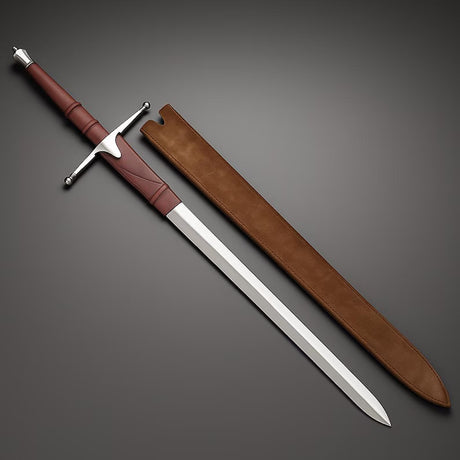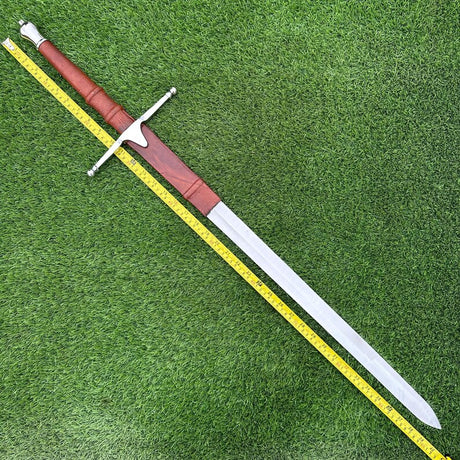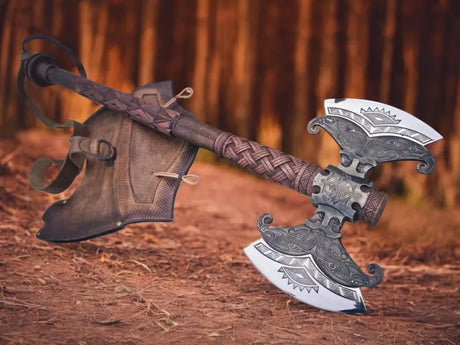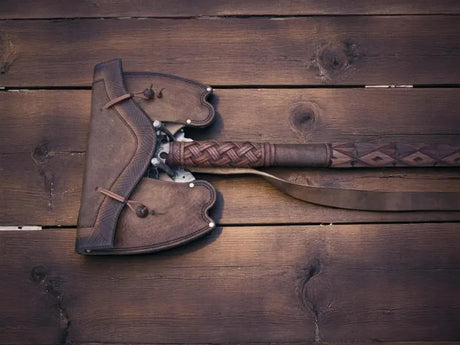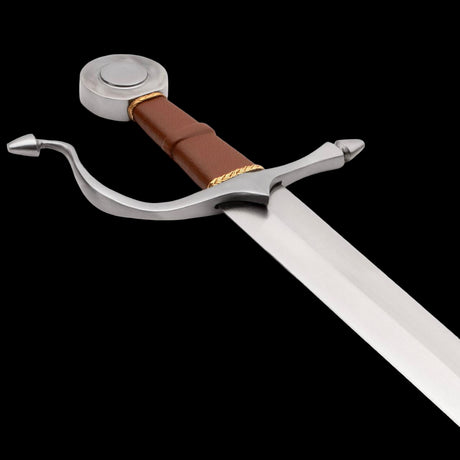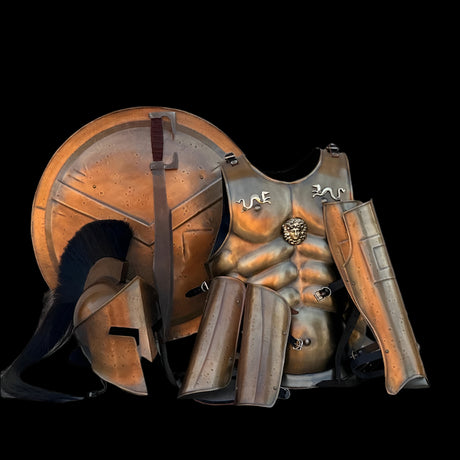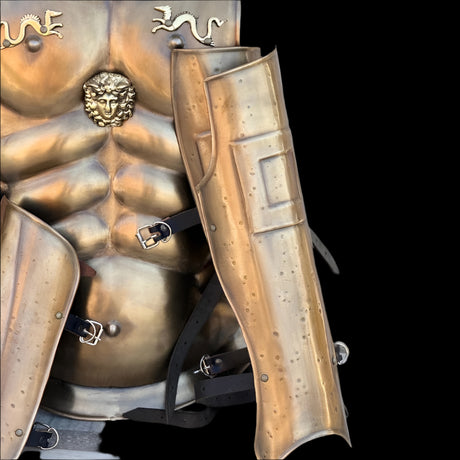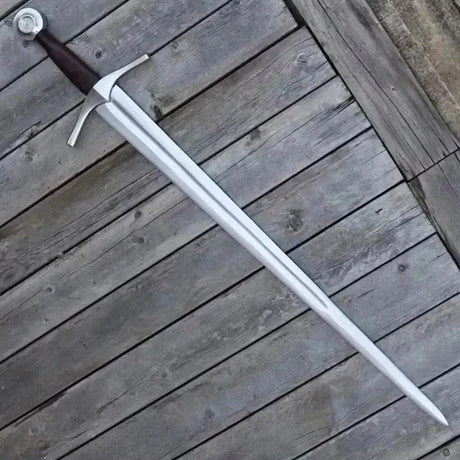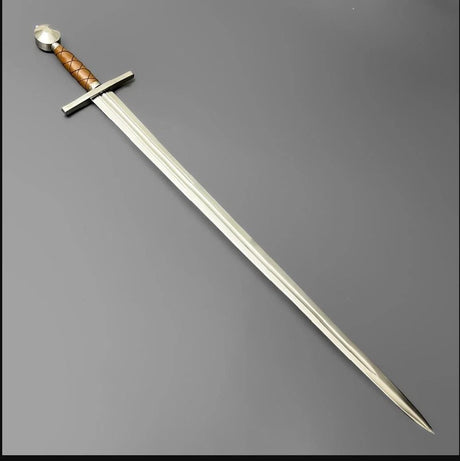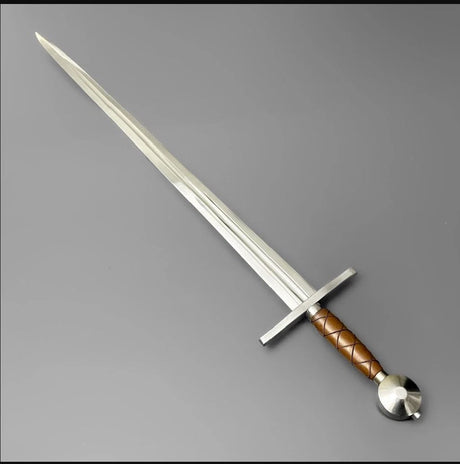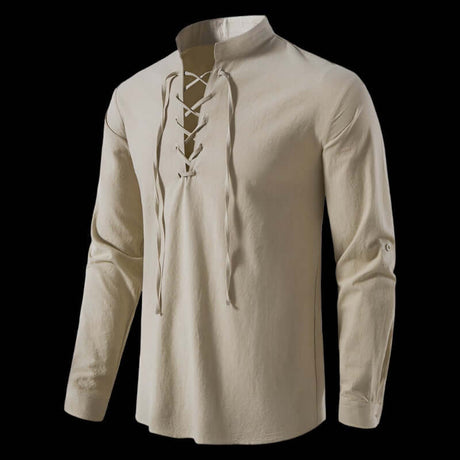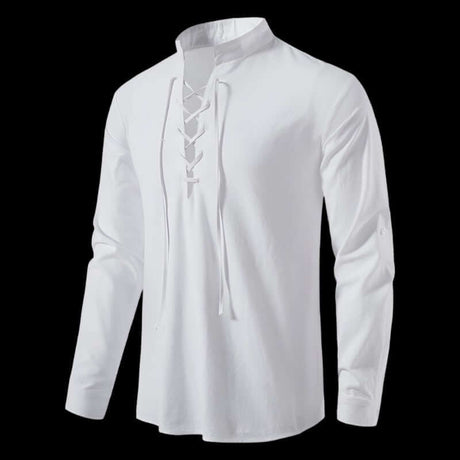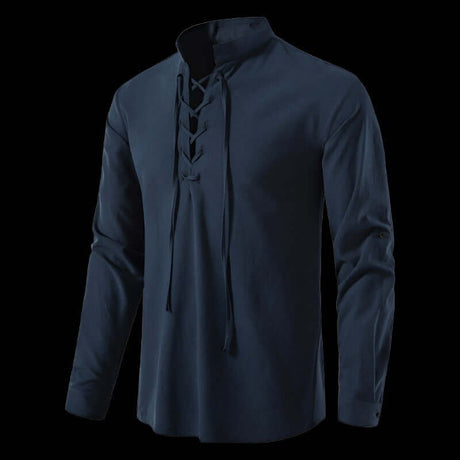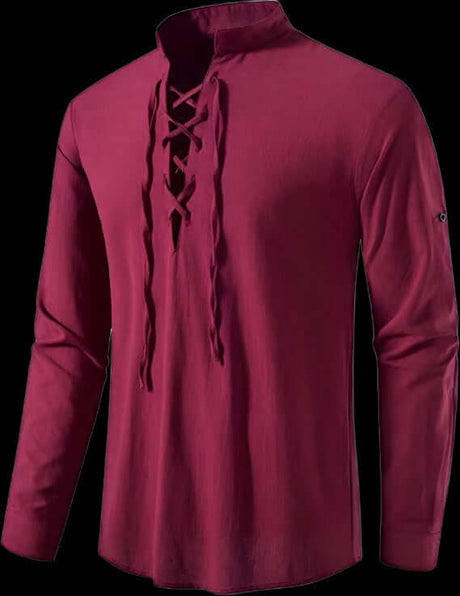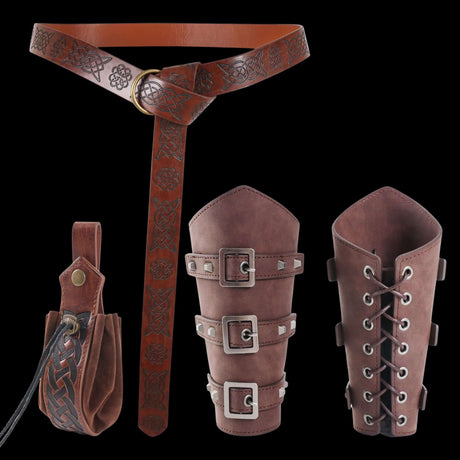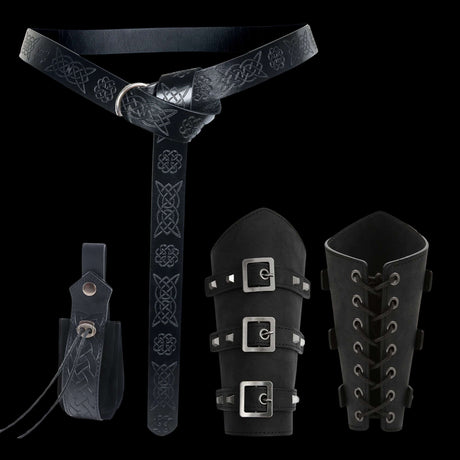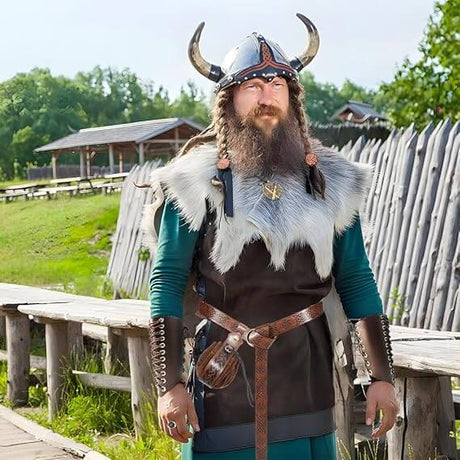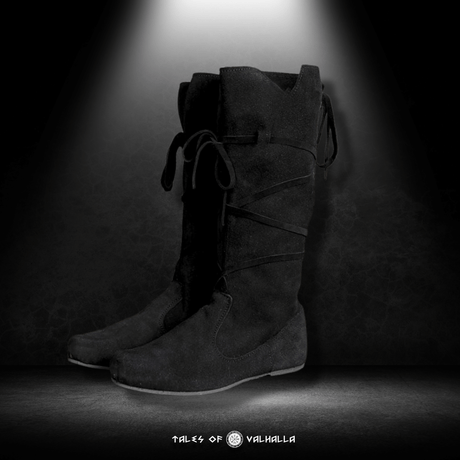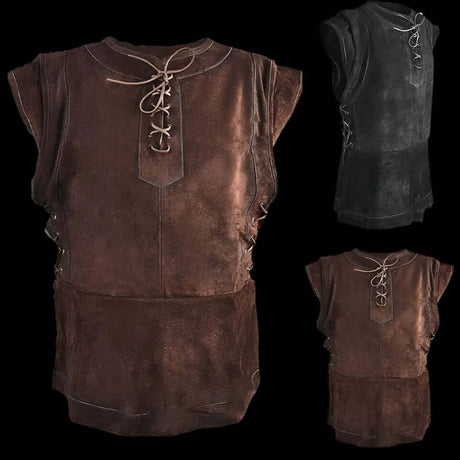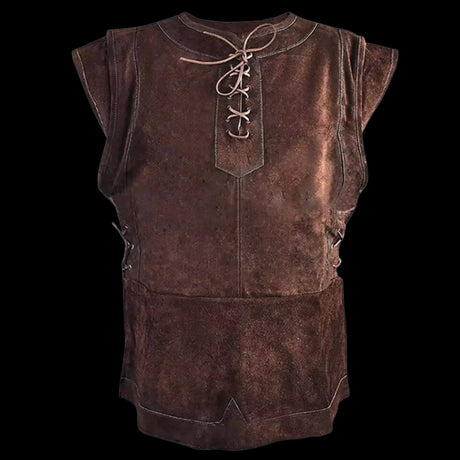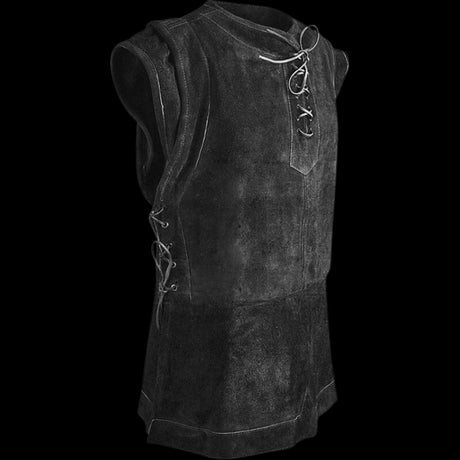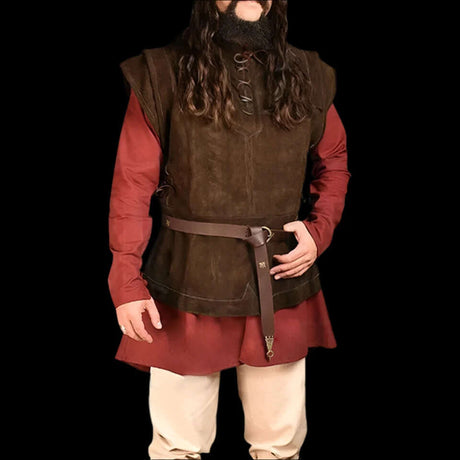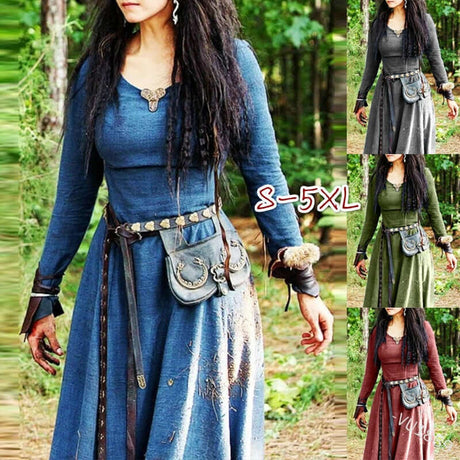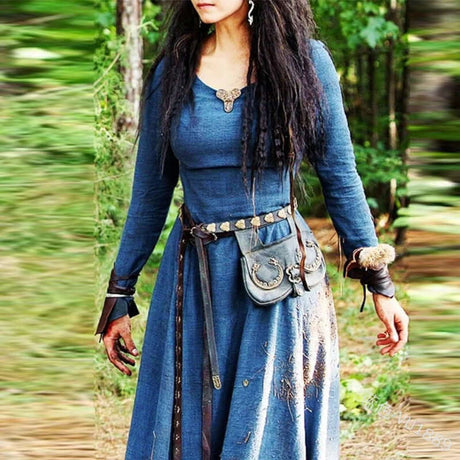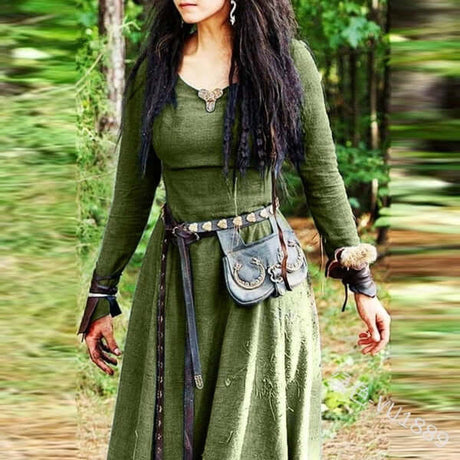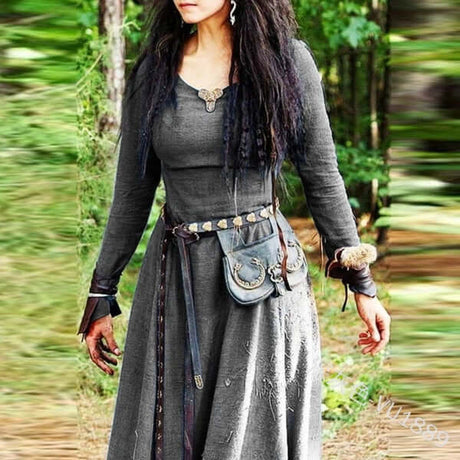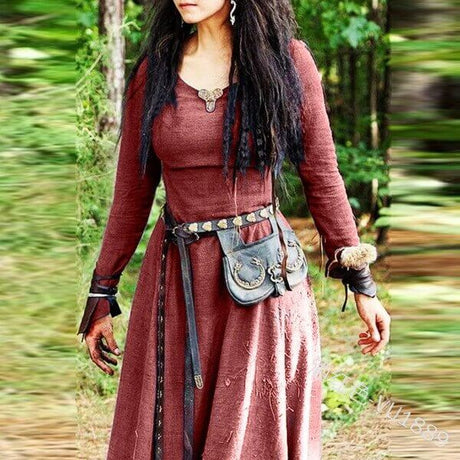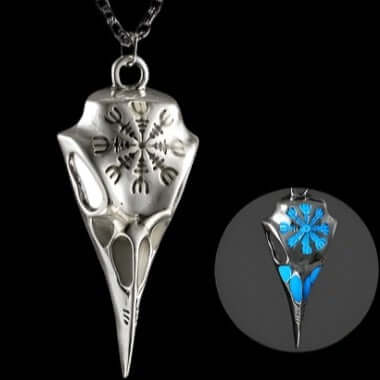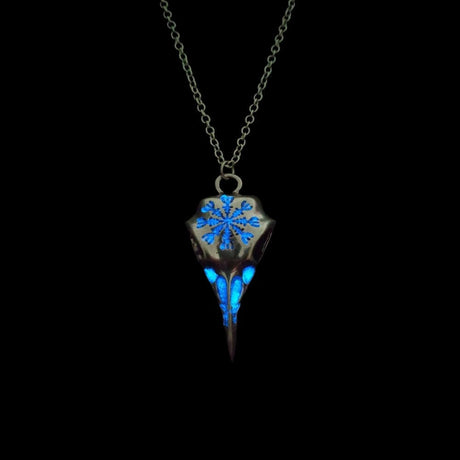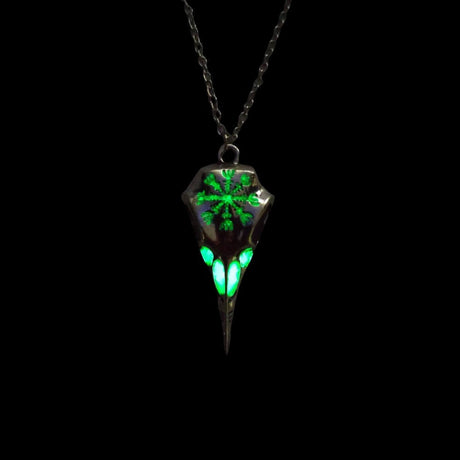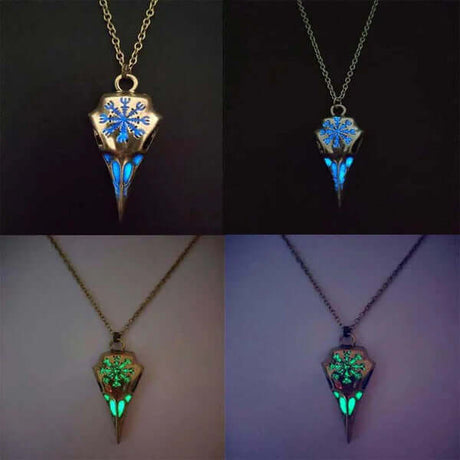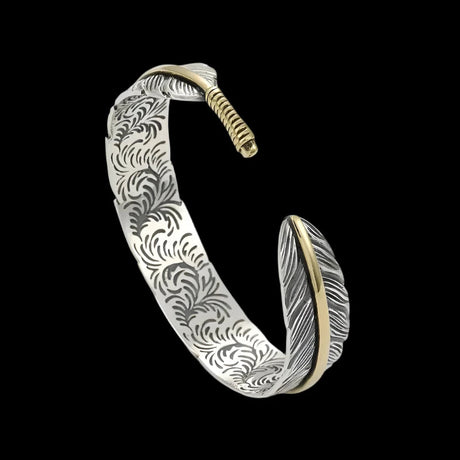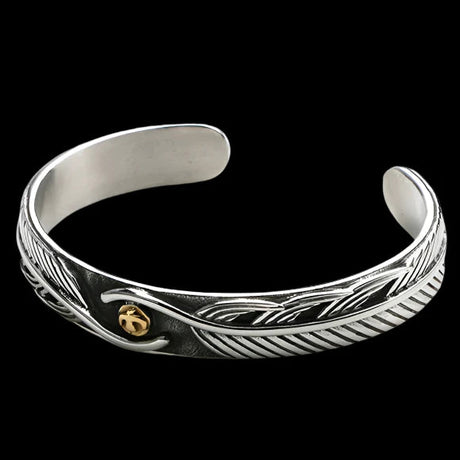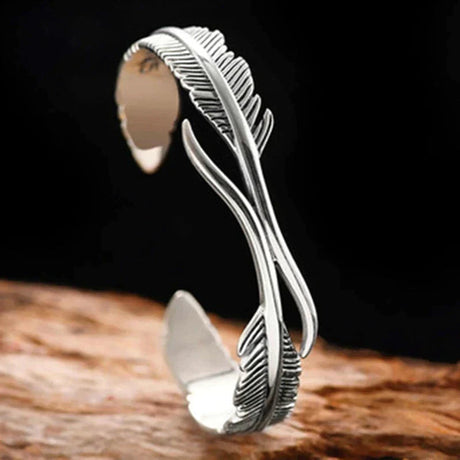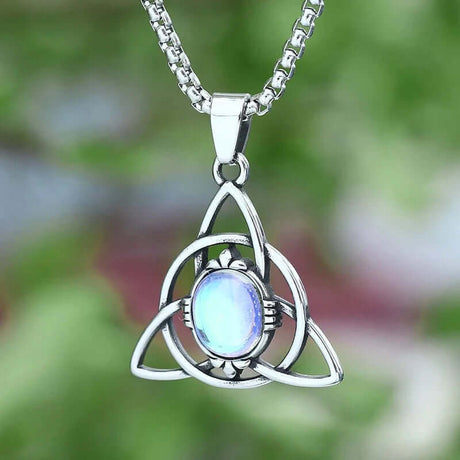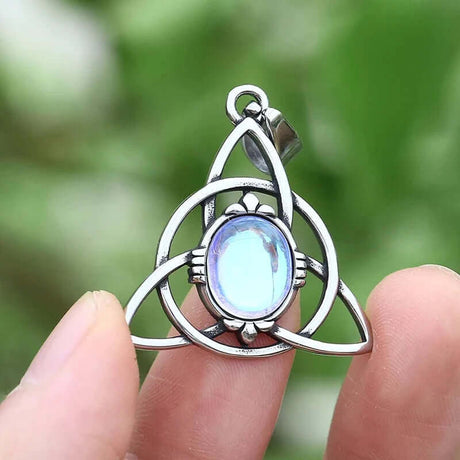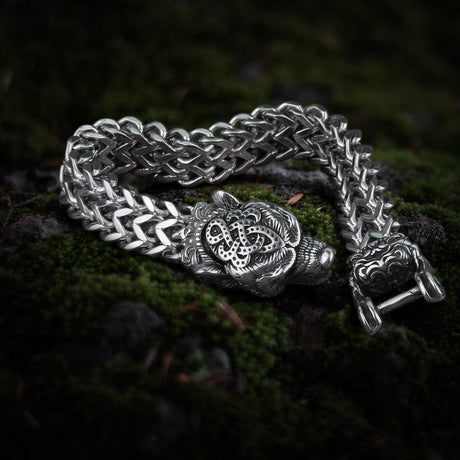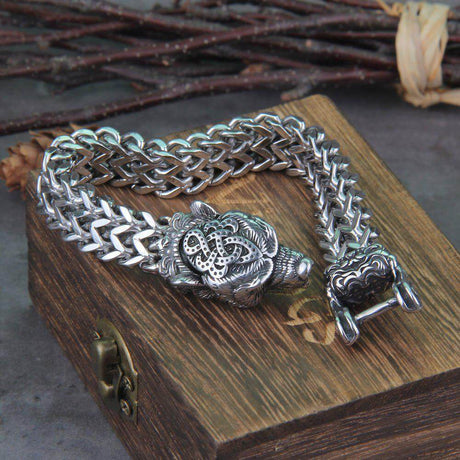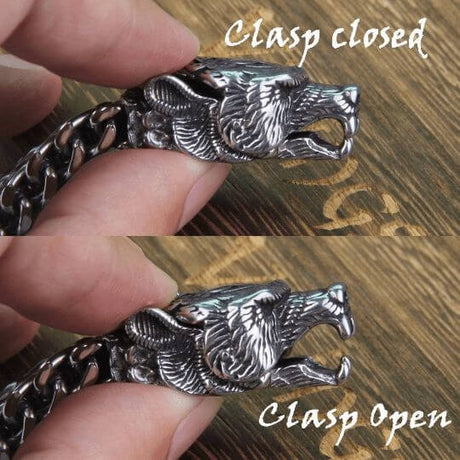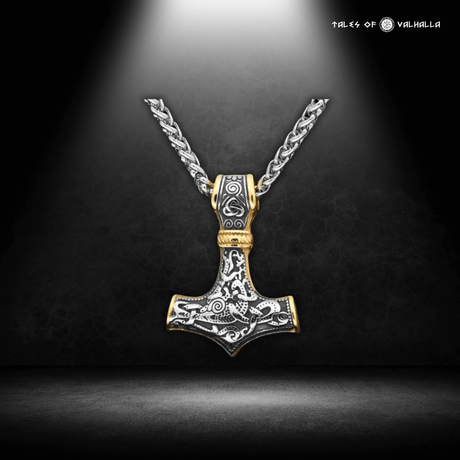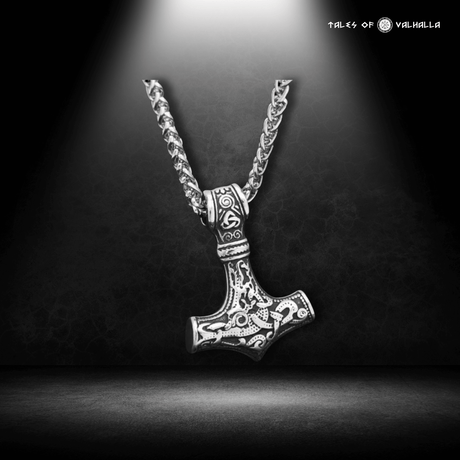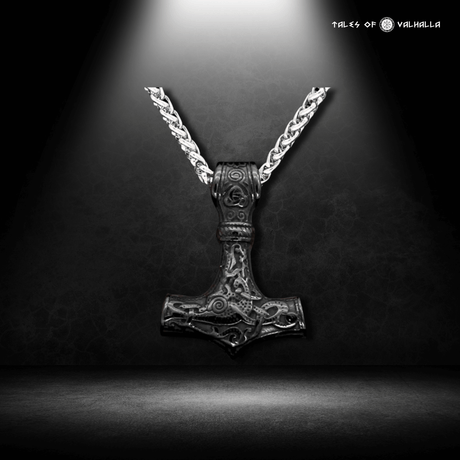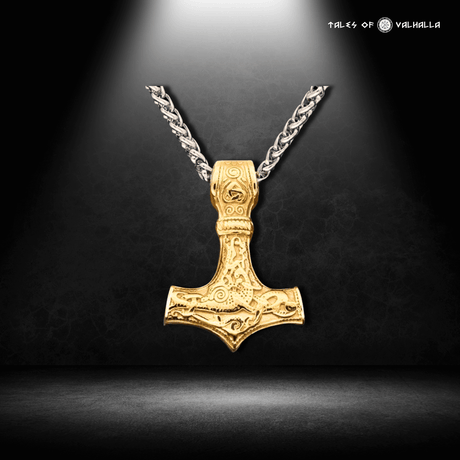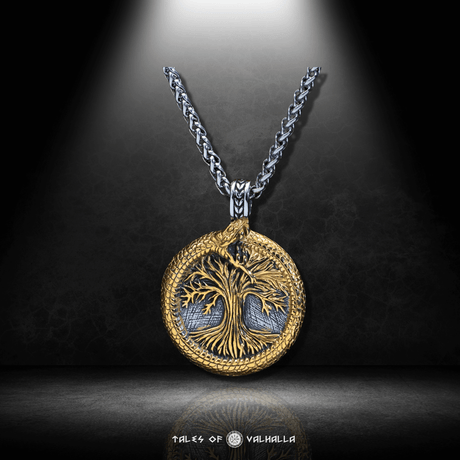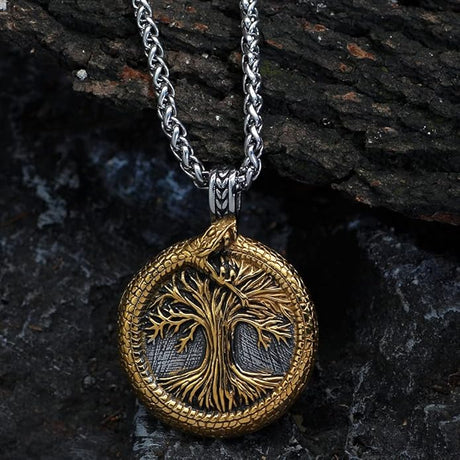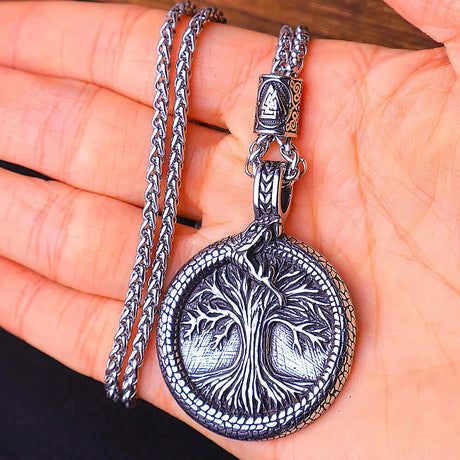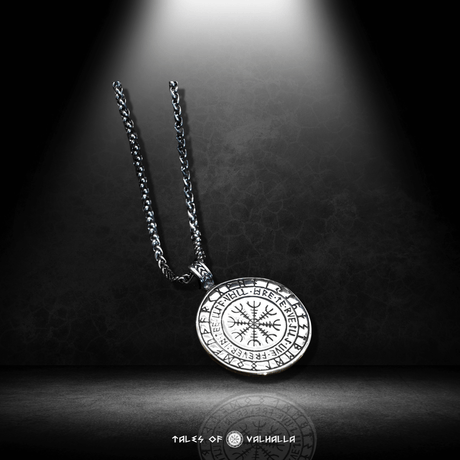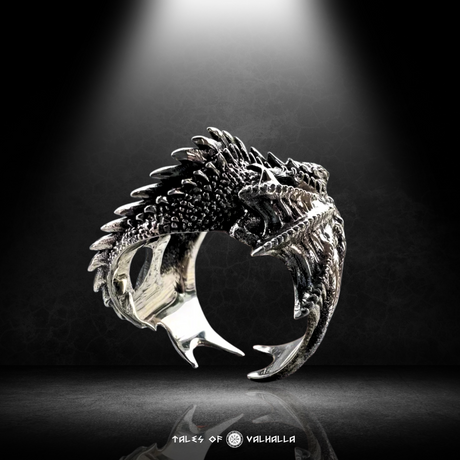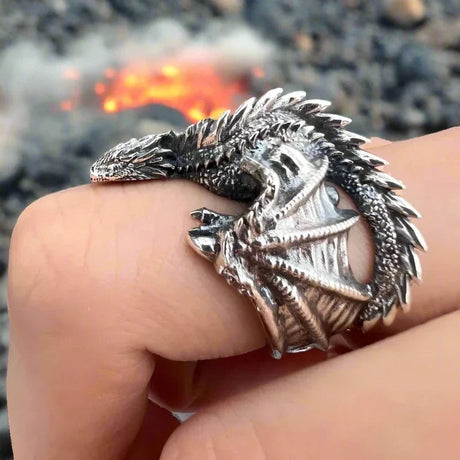Norse mythology is a rich tapestry of gods, giants, and mystical creatures, all intertwined within the cosmology of the Nine Realms. These realms, interconnected through the World Tree Yggdrasil, form the foundation of Norse mythological universe. In this blog, we will delve deep into the nine realms, uncovering their significance, inhabitants, and the role they play in Norse mythology.
Understanding the Nine Realms
The concept of the Nine Realms is central to Norse cosmology. These realms are distinct worlds, each with its unique characteristics and inhabitants. They are all connected by Yggdrasil, the immense and sacred tree that stands at the center of the cosmos. The roots and branches of Yggdrasil extend into each of the realms, symbolizing their interconnectedness and the cyclical nature of life and death.
What are the Nine Realms in Norse Mythology?
The nine realms in Norse mythology are:
- Asgard - Realm of the Aesir gods
- Midgard - Realm of humans
- Vanaheim - Realm of the Vanir gods
- Jotunheim - Realm of the giants
- Alfheim - Realm of the light elves
- Svartalfheim - Realm of the dwarves
- Niflheim - Realm of ice and mist
- Muspelheim - Realm of fire
- Helheim - Realm of the dead
Asgard: The Realm of the Aesir Gods
 Asgard: The Realm of the Aesir Gods
Asgard: The Realm of the Aesir Gods
Asgard is the home of the Aesir, the principal gods of Norse mythology, including Odin, Thor, and Frigg. It is depicted as a majestic realm of golden halls and grand fortresses. The most famous of these is Valhalla, where Odin houses the souls of warriors who died heroically in battle. These chosen warriors, known as Einherjar, train daily in preparation for Ragnarok, the prophesied end of the world.
Asgard is connected to Midgard, the realm of humans, by the Bifrost, a rainbow bridge guarded by the god Heimdall. This connection symbolizes the interaction between gods and humans, and the influence the divine has on the mortal world.
Midgard: The Realm of Humans
 Midgard: The Realm of Humans
Midgard: The Realm of Humans
Midgard, meaning "Middle Earth," is the realm of humans and is located in the center of Yggdrasil. It is a reflection of the human world, complete with landscapes, cities, and communities. In Norse mythology, Midgard is protected by the gods, particularly Thor, who defends it from giants and other threats.
Midgard is surrounded by a vast ocean, beyond which lie the other realms. It is connected to Asgard via the Bifrost, symbolizing the link between the mortal and the divine.
Vanaheim: The Realm of the Vanir Gods
 Vanaheim: The Realm of the Vanir Gods
Vanaheim: The Realm of the Vanir Gods
Vanaheim is the home of the Vanir, a group of gods associated with fertility, prosperity, and nature. The Vanir, including deities such as Njord, Freyr, and Freyja, are known for their connection to the natural world and their ability to bring about fertility and abundance.
The Vanir and the Aesir once waged a great war, which ended in a truce and the exchange of hostages to ensure peace. This event is symbolic of the integration of different aspects of life, such as war and peace, civilization and nature.
Jotunheim: The Realm of the Giants
 Jotunheim: The Realm of the Giants
Jotunheim: The Realm of the Giants
Jotunheim, also known as Jotunheimr, is the land of the giants (Jotnar), beings often depicted as adversaries of the gods. This realm is rugged and wild, characterized by mountains, forests, and harsh landscapes. The giants, who embody the forces of chaos and destruction, frequently clash with the gods.
Despite their antagonistic relationship with the gods, the giants are also integral to the cosmic balance, representing the natural and untamed aspects of the world. Loki, a trickster figure who often causes trouble for the gods, is actually a giant by birth.
Alfheim: The Realm of the Light Elves
 Alfheim: The Realm of the Light Elves
Alfheim: The Realm of the Light Elves
Alfheim is the realm of the light elves, ethereal beings associated with beauty, light, and magic. Light elves are considered to be benevolent and are often linked with the Aesir gods, particularly Freyr, who rules over Alfheim.
This realm is described as a place of eternal light and beauty, reflecting the elves' association with the positive forces of nature. The light elves play a significant role in aiding the gods and humans, often helping with healing and guidance.
Svartalfheim: The Realm of the Dwarves
 Svartalfheim: The Realm of the Dwarves
Svartalfheim: The Realm of the Dwarves
Svartalfheim, also known as Nidavellir, is the home of the dwarves. These skilled craftsmen and miners dwell underground, where they create some of the most powerful artifacts in Norse mythology, such as Thor's hammer Mjolnir and Odin's spear Gungnir.
The dwarves are depicted as master artisans, whose creations often play crucial roles in the myths. They are also associated with the earth and its hidden treasures, symbolizing the wealth that lies beneath the surface.
Niflheim: The Realm of Ice and Mist
 Niflheim: The Realm of Ice and Mist
Niflheim: The Realm of Ice and Mist
Niflheim, meaning "Mist Home," is a primordial realm of ice, mist, and cold. It is one of the oldest realms, existing since the beginning of time. Niflheim is often associated with darkness and the primordial chaos from which the world was created.
This realm is home to the well of Hvergelmir, from which many rivers flow, and it is considered the source of all life in Norse cosmology. Niflheim's icy landscape contrasts sharply with the fiery realm of Muspelheim, representing the duality of creation and destruction.
Muspelheim: The Realm of Fire
 Muspelheim: The Realm of Fire
Muspelheim: The Realm of Fire
Muspelheim, or Muspell, is the realm of fire and home to the fire giants led by Surtr. This blazing realm is depicted as a land of heat, flames, and desolation. Surtr, the fire giant, is prophesied to play a key role in Ragnarok, where he will lead the fire giants in the final battle against the gods.
The existence of Muspelheim alongside Niflheim highlights the balance of elemental forces in Norse mythology, with fire and ice representing the extremes of creation and destruction.
Helheim: The Realm of the Dead
 Helheim: The Realm of the Dead
Helheim: The Realm of the Dead
Helheim, often simply called Hel, is the realm of the dead who did not die in battle. It is ruled by the goddess Hel, daughter of Loki. This cold and shadowy realm is located beneath the roots of Yggdrasil and is often depicted as a place of bleakness and despair.
Helheim serves as the final destination for those who die of old age or illness, contrasting with Valhalla, where warriors who die heroically in battle are taken. Helheim emphasizes the inevitability of death and the importance of living a life worthy of remembrance.
The Significance of the Nine Realms in Norse Mythology
The Nine Realms of Norse mythology provide a comprehensive framework for understanding the Norse cosmos. Each realm contributes to the overall balance and harmony of the universe, with its unique characteristics and inhabitants. The interconnectedness of the realms through Yggdrasil symbolizes the interdependence of all things in the cosmos.
The 9 Worlds of Yggdrasil
Yggdrasil, the World Tree, is central to the Norse cosmology, connecting all nine realms. This immense ash tree stands at the center of the universe, with its roots and branches extending into each of the realms. Yggdrasil is a symbol of life, growth, and the cyclical nature of existence.
The well-being of Yggdrasil is crucial for the balance of the cosmos. The tree is tended by three Norns—Urðr (Past), Verðandi (Present), and Skuld (Future)—who water its roots from the Well of Urd. These Norns represent the forces of fate and time, emphasizing the interconnectedness of all events in the universe.
Exploring the Realms in Modern Times
Today, the fascination with Norse mythology and the Nine Realms continues to captivate the imagination of people worldwide. From literature and art to popular culture and media, the myths of the Norse gods and their realms remain a source of inspiration and wonder.
Books, movies, and TV shows frequently draw on Norse mythology to create rich, fantastical worlds that explore themes of heroism, fate, and the struggle between order and chaos. The enduring appeal of the Nine Realms speaks to their deep-seated significance in human culture and their ability to resonate with contemporary audiences.
Conclusion
The Nine Realms of Norse mythology offer a profound insight into the Norse understanding of the universe. Each realm, with its unique attributes and inhabitants, contributes to the rich tapestry of myths and legends that have been passed down through generations. By exploring these realms and their interconnectedness through Yggdrasil, we gain a deeper appreciation for the complexity and beauty of Norse cosmology.










